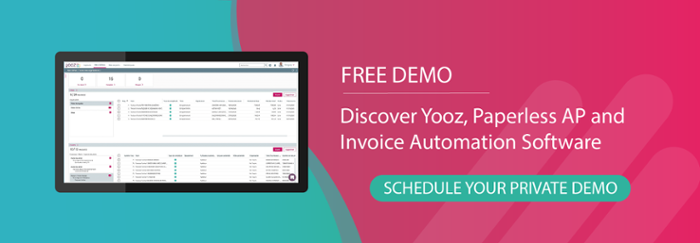Overview of the topic and the importance of efficient accounts payable processes.
In the world of financial operations, the contrast between a manual invoice processing system and automated accounts payable processes persists despite constant advances in technology.
Some organisations, even in the era of digital advancement, continue to rely on labour-intensive manual invoice processing systems as opposed to automated accounts payable. Within these organisations, invoices are painstakingly entered into their ERP or accounting system by hand. Email communication remains the go-to method for seeing approvals on purchase order from specific individuals, and they still use Excel spreadsheets to collate invoice data.
While there is nothing inherently wrong with any of these processes - especially for smaller entities handling a limited volume of invoices per week or month - a critical moment arises when organisations aspire to scale and seek enhanced operational efficiencies. At this juncture, where the goal is to cut costs, generate value, and empower the Accounts Payable (AP) team, it becomes time to overhaul the AP process.
In this article, we're going to delve into the advantages of embracing accounts payable automation versus manual processes. In addition, we will explore potential disadvantages associated with each approach, providing valuable insights for organisations contemplating a transformative shift in their AP operations.
Benefits of accounts payable automation
Exploring the advantages of implementing automated systems for accounts payable processing.
1. Time and cost savings
Discussing how automation can save time and reduce costs by streamlining the accounts payable process.
Employing cutting-edge Accounts Payable software streamlines routine, mundane and typically manual tasks, including invoice data entry, capture, processing, approval workflows, purchase orders, and supplier payments. This automation not only results in a substantial reduction in labor costs linked to traditional manual invoice processing systems but also significantly enhances the overall efficiency of the accounts payable process.
Furthermore, with the time and cost saved by eliminating manual processes, accounts payable teams can redirect their efforts towards other, more high-impact areas. This strategic shift allows teams to delve into activities such as precision spend forecasting, meticulous management of the monthly and annual budgets, and strategic identification of the ideal suppliers for forthcoming goods and services (thus securing potential discounts).
2. Increased accuracy and efficiency
Highlighting how automation can improve accuracy and efficiency by minimizing human errors and manual tasks.
Whether managing a few invoices monthly or handling tens of thousands a year, accounts payable automation tools are designed to handle these repetitive tasks with the utmost precision.
Unlike humans who are susceptible to error, machines operate flawlessly (unless a problem or bug is introduced) and can function continuously, provided the electricity bill is paid.

Automation automatically routes invoices to the correct individual based on an approval workflow, saving valuable time and optimising efficiency. Real-time notifications are sent to AP teams upon completion of each step in the process.
The result is AP automation tools can significantly streamline the entire accounts payable process, from invoice capture to receipt, payment, and archival.
3. Enhanced data visibility and security
Explaining how automated systems offer better data security measures compared to manual processing.
Accounts payable automation systems offer real-time visibility into financial data wherever it resides, along with enterprise-grade data security and full compliance with local, regional, and global policies.
Most AP systems feature built-in dashboards. The moment anyone enters the AP portal, they're met with the latest information, including invoice location, invoices processed, invoices that require approval, current budgets, current spending, and much, much more. This all helps to make better financial decisions.
In terms of security, specific controls and policies are implemented to ensure that only authorised individuals have access to invoice data, especially approvals exceeding a certain amount, and supplier agreements. Teams can also trace the origin of invoices and purchase orders for compliance assurance.
Drawbacks of accounts payable automation
Examining the potential disadvantages or challenges associated with implementing automated accounts payable systems.
So, you may be wondering about the downsides of automated AP systems. While these systems sound great and offer numerous benefits, there are a few considerations:
1. Technical issues and maintenance
Highlighting the importance of technical support and maintenance for ensuring the smooth functioning of automated systems.
As with any software solution, ensuring the installation of updates, practicing good data hygiene (such as cleaning databases of null and void information), updating policies, and scheduling routine maintenance with exports is crucial for smooth system operations.
The drawback lies in the need to perform these tasks to ensure optimal functionality so that the systems run smoothly.
Occasionally, outside of these required tasks, unavoidable technical issues may arise due to the nature of technology. No software is flawless, and subsequently, this leads to sporadic bugs or disrutpions such as a temporary cloud-based server outage affecting AP system accessibility.
Fortunately, such issues are far less frequent than human error, and the systems typcially demonstrate a rapid return on investment (meaning the benefits far outweigh the costs).
2. Implementation costs
Discussing the costs and challenges involved in setting up and integrating an automated accounts payable system.
While the long-term benefits of AP automation are substantial and well-documented, the initial costs of implementing these systems, along with the effort to familiarise users with their effective use, can pose a barrier for organisations.
While the investment often makes sense for large enterprises regularly processing thousands of invoices, smaller organisations with limited invoice processing needs may find AP automation lower on their list of priorities.
3. No buy-in or poor communication
Why buy-in and communication are important for success
Successful implementation of any technology requires effective communication and collaboration within teams. While AP teams might be keen to start, it's important to consider how many touchpoints are affected by a purchase order or invoice approval process. Involving every relevant department, be it purchasing, procurement, or IT, in the decision-making process ensures that organisations implement the right solution in the most efficient and effective manner.
This isn't necessarily a drawback of the solution itself, but rather the context in which it's set up and used versus an inherent flaw.
Considering AP Automation? Choose Yooz
Yooz presents an unparalleled solution that harnesses the power of Artificial Intelligence (AI) and RPA technologies, delivering an exception level of automation combined with simplicity, traceability, and fully customisable end-to end features.
Seamlessly integrating AP automation into information systems or Enterprise Resource Planning (ERP) platforms, Yooz boasts over 250 native connectors, surpassing any other automated solution already on the market.
If you're ready to transition from a manual accounts payable process to a scalable, end-to-end accounts payable automation solution that delivers unmatched business value, let's start the conversation!









